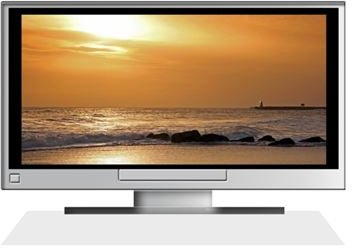Best Picture Settings for HDTV
Picture Setting
Not every HDTV will have the same setting options, but most are at least similar. One such setting option is probably labeled “Picture” on the remote control or on your HDTV settings menu. There are typically three picture settings from which you can choose, which are usually named Dynamic or Vivid, Natural or Standard, and Movie, Professional or Cinema. There are other settings that you can adjust that will tweak your HDTV picture for the best outcome, but it is a good idea to start with the basic picture settings.
Selecting the Dynamic or Vivid picture setting will provide a brighter, more intensified picture. This picture setting is commonly used for HDTVs on display at retail stores because the colors are so brilliant and the lighting so bright. At first glance, this may seem like the best picture setting for your HDTV. However, due to the brightness, it can be taxing on your eyes after an extended period. This is especially true if you sit relatively close to the screen. This picture setting may be best suited for gaming or strongly lit rooms.
The Natural or Standard picture setting is likely the default picture setting on your HDTV. This setting is not as bright as the Dynamic or Vivid setting, but is somewhat brighter and sharper than the final setting option. If you are using your HDTV to view standard broadcasting, such as local television, cable or satellite, but not high definition channels, this picture setting may be best for you.
Finally, the Movie, Professional or Cinema picture setting is adjusted to provide the most realistic picture. This is especially true if you are viewing high definition programming, such as a high definition cable or satellite channel or a movie on DVD. Otherwise, you may feel this picture setting is too dark.
Photo Credit: sxc.hu/Steve Woods
Brightness or Black Level
The Brightness or Black Level setting you choose is also key in getting the best picture possible. To find the best Brightness setting for your HDTV, play a DVD or television program with a dark or night scene. It is best if you can pause the DVD or, if you have a DVR, pause the live television program during a particularly dark scene but one with some sort of detailed image, such as a person walking down a street at night.
Start with the basic picture setting in either Standard or Movie mode and turn the Brightness setting all the way down. Gradually bring it up in increments until you can just see details in the picture for the best setting.
Contrast
Just as you used a dark scene to find the best Brightness picture setting, find a scene with a lot of white detail to adjust the Contrast setting on your HDTV. This setting is typically high as a default, and having it too high increases the chance of burn-in on some types of screens. Try bringing it down in increments until you can see the shadows, creases or other contrasting details in the white objects of the picture - between 30% and 50% is usually best.
Color or Saturation and Sharpness
Without the best Color or Saturation and Sharpness settings selected, the picture may look brash or blurry. Fortunately, the defaults for these picture settings are usually close to the best possible. If people on your HDTV look orange, bluish or otherwise odd, carefully and gradually adjust these picture settings until you find the best ones.
More Help
If you have adjusted your HDTV picture settings but discover they are not the best ones for you, go back to your settings menu and find the Reset option. Click this and your default picture settings will be restored. You can then start over again from scratch, or stick with the manufacturer’s defaults, whichever works best for you.
For more help setting up the best home theater ever, check out the Bright Hub collection of articles including Home Theatre Lighting Basics: What do I need? and How to Optically Calibrate Your DVD Player.
